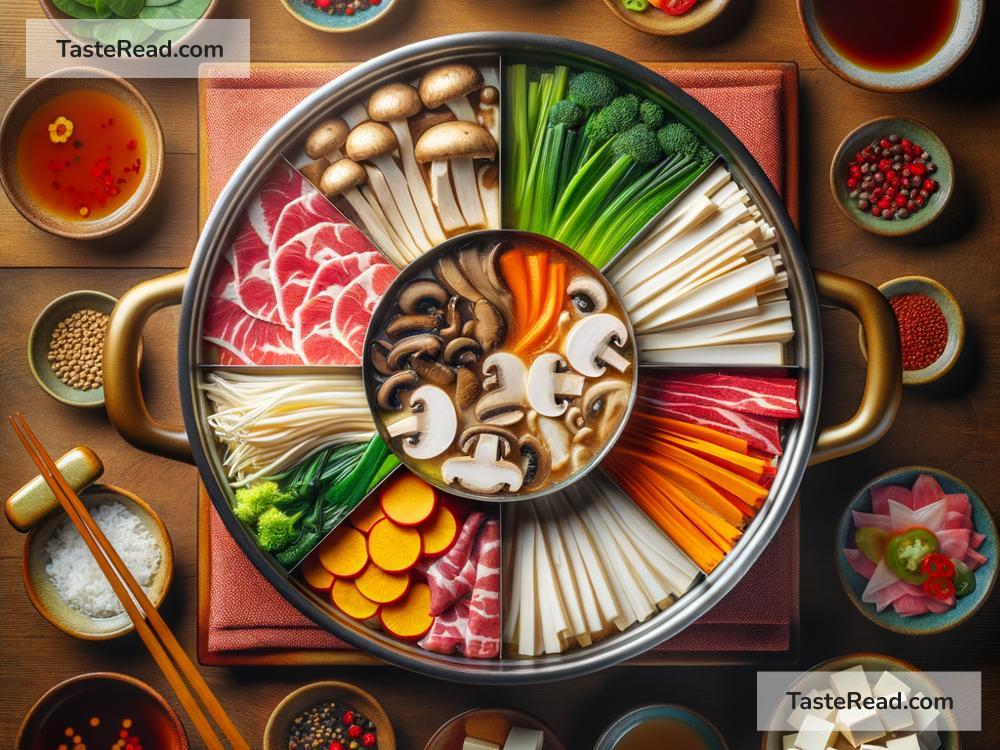Savoring the Warmth: A Journey into Chinese Hot Pot Delight
As the weather gets chilly, nothing soothes the soul and warms the body quite like a simmering pot of hot pot, a beloved feast originating from China that has made its way into the hearts of food enthusiasts worldwide. Chinese hot pot isn’t just a meal; it’s an experience, a ritual that brings people together, around a bubbling pot of broth, to dunk in and fish out delicious morsels of food that have been cooked right at the table. This culinary tradition is steeped in history, culture, and an array of flavor complexities that invite you to explore its depths.
The Heart of the Experience: The Broth
At the core of any hot pot feast is the broth. This is not just any soup base; it’s the canvas upon which the entire meal will be painted. Chinese hot pot broths range from the light and fragrant to the rich and spicy. The choice of broth can vastly influence the flavor of the ingredients dipped into it. Some popular broth bases include the clear and aromatic chicken or vegetable broth, the rich and creamy bone broth, and the fiery and numbing Sichuan-style mala broth, known for its use of Sichuan peppercorns which impart a unique tingling sensation.
The Palette of Ingredients: Variety is Key
After setting the stage with the broth, it’s time to choose the cast of ingredients that will take the plunge. The beauty of hot pot lies in its versatility and inclusivity; there’s something for everyone. Thinly sliced meats like beef, lamb, and chicken are favorites for their quick cooking times and tender texture. Seafood lovers can rejoice with options like shrimp, scallops, and slices of fish. Tofu in its many forms, from soft to firm, soaks up the broth’s flavors like a sponge, offering a delightful treat for vegetarians.
Vegetables also play a crucial role, adding freshness, color, and texture. Leafy greens like spinach and bok choy, mushrooms, corn on the cob, and slices of lotus root not only contribute to the flavor but also to the visual appeal of the hot pot. And let’s not forget about the noodles—be it udon, rice noodles, or glass noodles, they’re perfect for soaking up the delicious broth.
Dipping Sauces: The Final Touch
The customization of hot pot extends to the dipping sauces, which add an extra layer of flavor to the cooked ingredients. These sauces can be as simple or as complex as you like, tailored to individual tastes. A popular choice is a mixture of soy sauce, sesame oil, and a dash of chopped green onions and garlic. Others might prefer spicy sauces, peanut sauce, or even a citrusy ponzu sauce. The possibilities are nearly endless, encouraging diners to experiment and find their perfect match.
A Social Affair
One of the most charming aspects of Chinese hot pot is its inherently social nature. Gathering around the hot pot, everyone takes part in cooking, chatting, and sharing, making the meal a collective endeavor. It’s a time to slow down and savor not just the food but also the company. This sense of togetherness is a core component of the hot pot experience, embodying the Chinese philosophy of sharing a meal as an act of love and community.
Embracing the Adventure
For those new to the world of Chinese hot pot, the variety and the interactive dining experience can be both exciting and a bit overwhelming. The key is to embrace the adventure. Start with a basic broth, and select a few ingredients that you’re familiar with. As you become more comfortable, begin to explore more adventurous options. Remember, there’s no right or wrong way to enjoy hot pot; it’s all about discovering what you love.
In conclusion, Chinese hot pot is not just a dish; it’s a journey into a rich landscape of flavors, textures, and aromas. It offers a unique dining experience that is as much about the joy of eating as it is about the joy of gathering and sharing. So, as the weather cools down, consider warming up with a pot of hot pot. Who knows? It might just become your new favorite culinary tradition.


